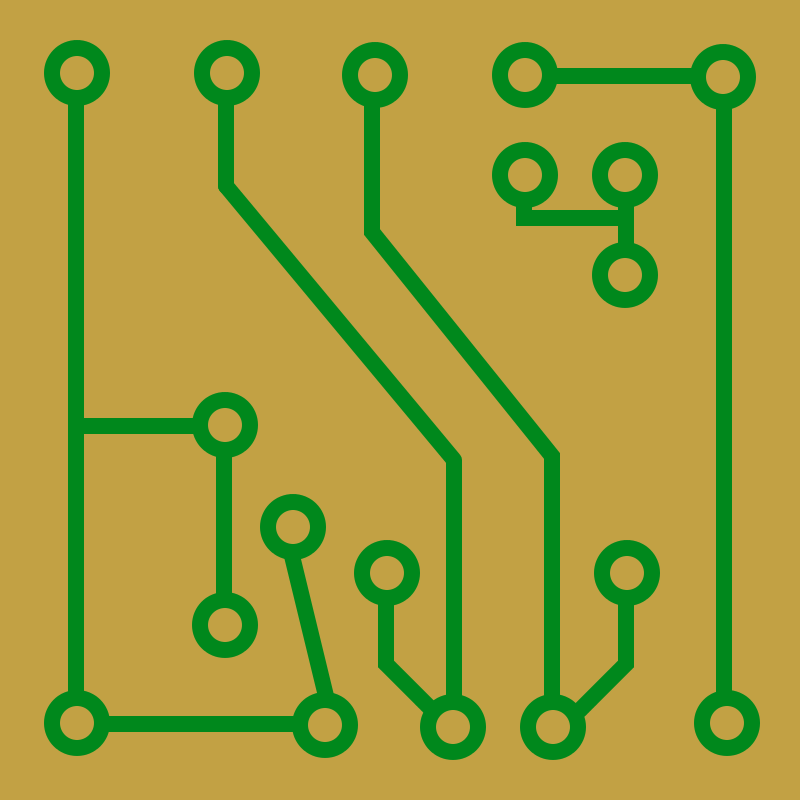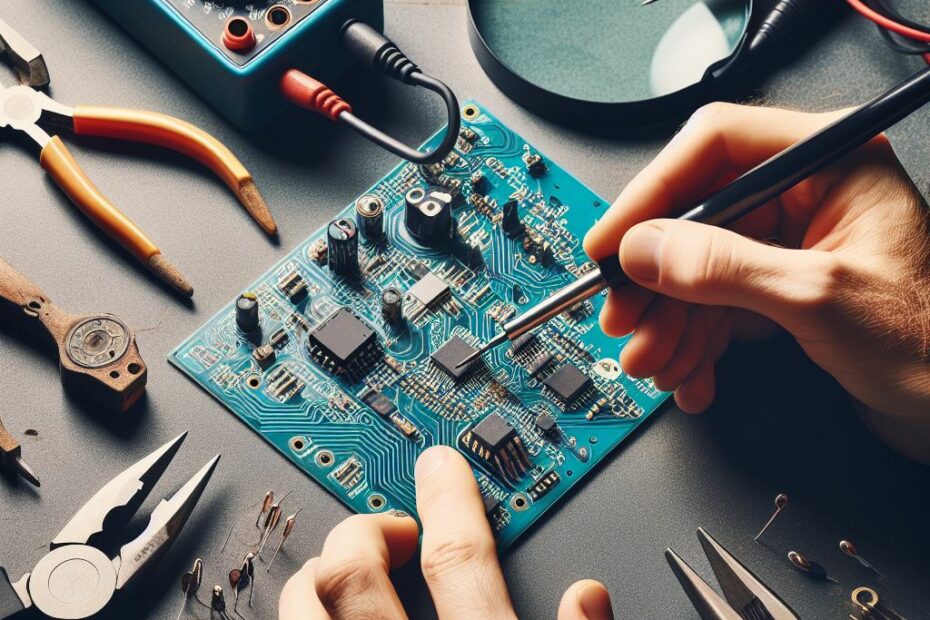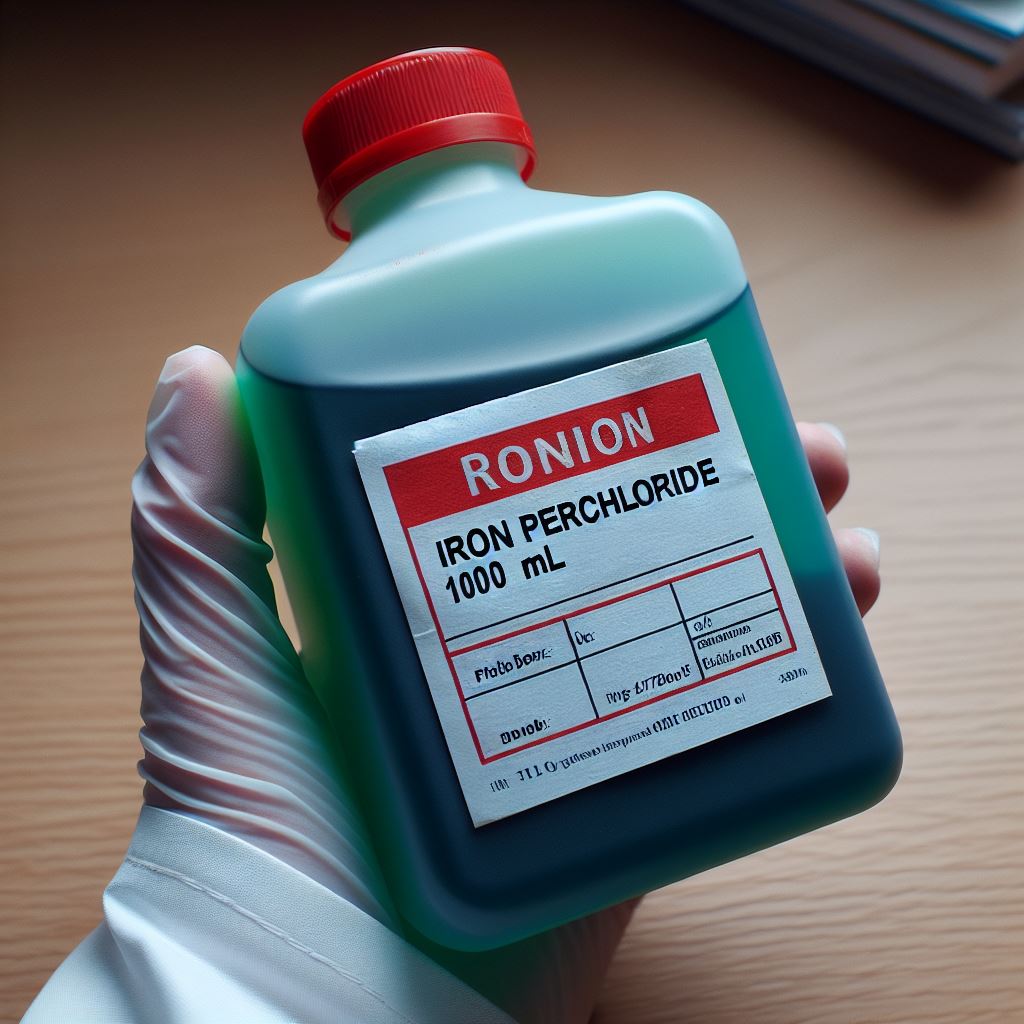Crafting a printed circuit board (PCB) with minimal tools and simple, cost-effective methods is not only feasible but also empowering. The chemical etching method offers a DIY approach to PCB fabrication, enabling enthusiasts to bring their electronic projects to life without breaking the bank. Embracing resourcefulness, one can transform readily available materials into functional PCBs. Here’s a guide to embark on this journey of creativity and innovation, where ingenuity surpasses limitations. From sketching the circuit layout to etching and assembly, each step fosters a deeper understanding of electronics. With determination and creativity, aspiring makers can unleash their potential, turning concepts into tangible reality with minimal resources, reflecting the essence of innovation and self-reliance.

Materials needed
- Copper-clad board (available at many hardware stores)
- Transparent film or wax paper
- Permanent marker pen
- Sheet of fine abrasive paper
- Ferric chloride solution (or diluted hydrochloric acid with hydrogen peroxide)
- Plastic container for etching
- Safety equipment (rubber gloves, safety goggles)
- Water for rinsing
Process steps:
- Circuit Design: In the circuit design phase, meticulously sketch out the diagram by hand or leverage drawing software for precise track layout. Embrace simplicity, aiming to streamline the circuit’s complexity. This stage serves as the foundation, where clarity and efficiency pave the way for successful PCB fabrication.
- Preparing the Copper Board: Before proceeding, meticulously clean the copper-clad board with fine abrasive paper to eliminate all traces of dirt and oxidation. It’s crucial to attain a smooth, pristine surface, as this lays the groundwork for optimal PCB fabrication.
- Transferring the Layout: During the layout transfer phase, delicately position the circuit diagram onto the copper board. With steady hands, trace the tracks using a permanent marker, ensuring the lines are bold and consistent for accurate etching. This meticulous process sets the stage for the successful creation of intricate circuitry on the PCB.
- Etching: During the etching phase, immerse the copper-clad board with the layout into a container filled with ferric chloride solution or diluted hydrochloric acid. Allow the board to rest until the unprotected copper is entirely etched away, leaving behind the desired circuit pattern. Periodically agitate the container to enhance the etching process’s efficiency. This crucial step demands patience and precision, ensuring that only the intended traces remain on the board, ready for the subsequent stages of PCB fabrication.
- Rinsing: After completing the etching process, carefully extract the copper board from the solution. Thoroughly rinse it with water to eliminate any lingering chemical residue, guaranteeing the cleanliness of the board. Inspect the etched tracks closely to ensure they are clear and sharply defined, ready for the subsequent steps of PCB assembly. This meticulous rinsing stage is crucial to ensure the board’s integrity and functionality in the final electronic circuit.
- Drying and Finishing: Following the air-drying process, proceed to delicately eliminate any residual burrs on the copper tracks using fine-grade abrasive paper. This meticulous step ensures a smooth surface, facilitating optimal conductivity and enhancing the overall performance of the board.
- Drilling: For precision, employ either a manual drill or a basic drill bit to bore holes precisely at the designated connection points within your circuitry. This meticulous drilling process ensures alignment and accuracy, crucial for seamless integration and reliable functionality of your circuit components.
- Assembly: Upon completion of your PCB fabrication, commence the assembly process by meticulously soldering electronic components onto their designated tracks. This pivotal step requires precision and attention to detail to ensure secure connections and optimal functionality of the circuitry. By methodically adhering to assembly guidelines, you pave the way for the successful integration of components, laying the foundation for a reliable and efficient electronic device.
While this method is simple and cost-effective, it requires careful handling of chemicals and attention to safety. Ensure you wear rubber gloves and safety goggles when handling the etching solution and work in a well-ventilated environment.

